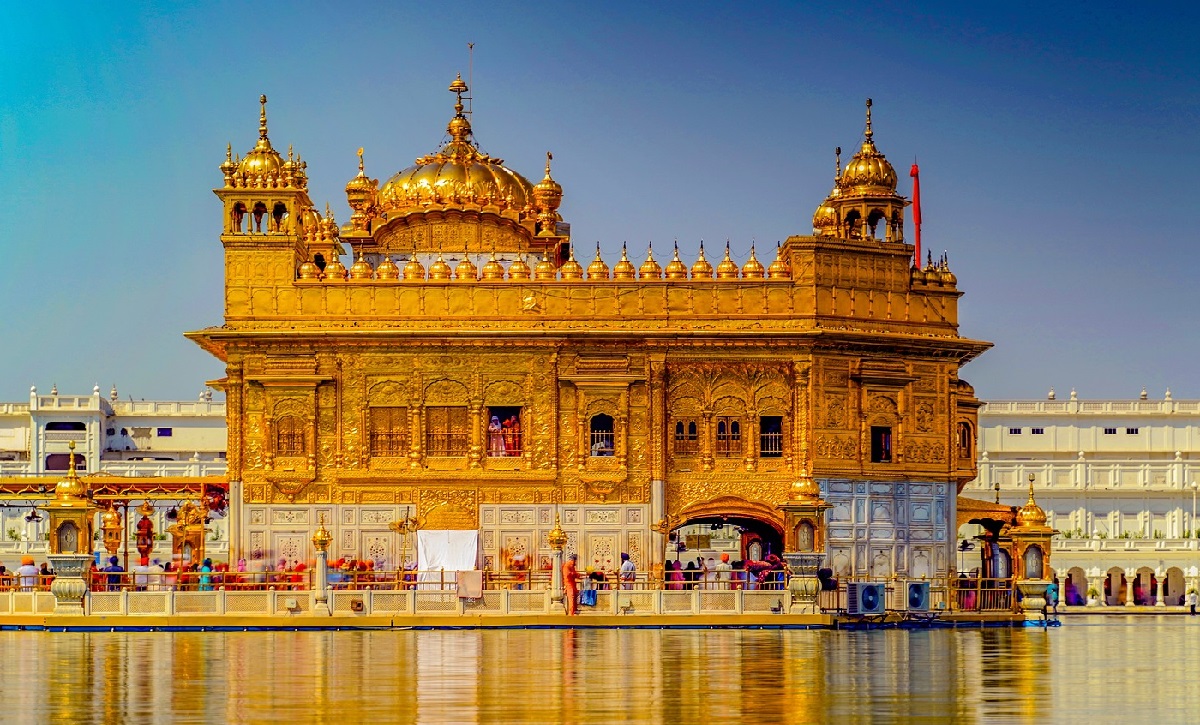Punjab: Cradle of Sikhism, Land of Abundance, and Vibrant Spirit
Punjab the tiny state, which is tucked away in India’s northwest, is a tapestry of lush plains, a fascinating past, and a lively cultural legacy. The State is known as the “Land of Five Rivers” because of its rich agricultural history, martial prowess, and spiritual enlightenment. The Sutlej, Beas, Ravi, Chenab, and Jhelum are the five rivers that make up Punjab.
A Journey Through Time: From Indus Valley Civilization to Modern Metropolis
With traces of the ancient Indus Valley Civilization reaching back to 3300 BC, Punjab’s history extends over millennia. The Mauryan Empire brought prosperity to the region, especially under Ashoka the Great’s rule. The introduction of Islam in the seventh century was a turning point, as Sufi saints such as Baba Farid Ganj Shakar preached tolerance and love. But with the advent of Sikhism in the fifteenth century, and the teachings of Guru Nanak Dev regarding social justice and worldwide brotherhood, the State’s spiritual landscape was transformed.

The Mughal era is remembered for its magnificent forts and tombs that exhibit remarkable architectural design. From the 18th through the mid-20th century, the State’s socioeconomic structure was changed by British colonial control. Regretfully, the State was split up along religious lines during India’s 1947 partition, with the western portion becoming a part of Pakistan.
A Canvas of Landscapes: From Fertile Plains to Picturesque Hills
Punjab is a beautiful state with a variety of scenery. The state’s agricultural core is made up of the enormous, lush plains of the Indus and its tributaries. The State has a significant contribution to India’s food security because of its patchwork-like landscape made up of fields of wheat, rice, cotton, and sugarcane.

A striking contrast is provided by the gorgeous Shivalik Hills, which rise along the northern boundary. Trekking options and the chance to take in the splendor of nature are offered by dense forests, tumbling waterfalls, and tranquil valleys. Numerous wetlands and canals can be found all around the state; they are home to a wide variety of birds and provide a refuge for those who enjoy the outdoors.
A Tapestry of Traditions: Beyond Bhangra and Butter Chicken
The State has a thriving and diverse cultural history. Punjabi culture is heavily influenced by the Sikh religion, with the Golden Temple in Amritsar serving as both the holiest Sikh shrine and a metaphor for enlightenment. Sikhism places a strong emphasis on virtues that are intrinsic to the Punjabi ethos, such as integrity, diligence, and service to humanity.

The warmth, friendliness, and zest for life of the Punjabi people are well known. Their colorful folk dances and music reflect their excitement. Bhangra is an exuberant dance that is enjoyed all over the world. It is distinguished by its strong motions and vibrant clothes. Women execute the vibrant folk dance known as “giddha,” which is another enthralling display of Punjabi culture.
The cuisine of the State is a delicious fusion of aromatic spices and rich flavors. Among the most well-liked foods are Sarson ka Saag (curried mustard greens) and butter chicken, a creamy tomato-based dish. Other must-try dishes are Amritsari Kulcha (stuffed flatbread) and Dal Makhani (black lentil curry). A cool yogurt-based beverage called lassi goes well with Punjabi food.

A Land of Festivals and Fairs: Celebrating Life with Color and Joy
Punjabis have a passionate and energetic celebration of life. Marking the start of the harvest season and the Sikh New Year, Baisakhi is a colorful celebration with traditional music, dances, and delicious food. Lohri is a celebration of the winter solstice marked by bonfires and sweets. Another significant occasion that brings happiness and optimism into homes and hearts is Diwali, often known as the festival of lights. Part of Punjabi culture are fairs and melas, or gatherings. These colorful gatherings provide traditional crafts, farm-fresh produce, and regional performances a stage. Sikhs celebrate their martial prowess at the Hola Mohalla, a spectacular event featuring swordsmanship demonstrations and mock battles.

A Legacy of Martial Arts and Sporting Prowess
The State has a rich martial arts history. The stick-fighting art form known as “gatka” has its roots in Punjab and is being practiced there today. In addition, the state has produced several internationally famous athletes, especially in the sports of kabaddi, cricket, and field hockey. These sporting triumphs encourage the next generation of athletes to strive for athletic greatness in addition to inspiring pride in the country.

Beyond Stereotypes: A Land of Progressive Initiatives
Punjab has had to deal with issues including environmental degradation and social injustice. To create a more equal society, programs that support women’s empowerment and girls’ education are essential. To protect the ecosystem for coming generations, sustainable farming methods must be implemented.
A Hub of Industry and Innovation: Modern Punjab Takes Center Stage
Although Punjab’s economy still primarily depends on agriculture, the province is seeing a sharp increase in industrialization. Major industrial hub Ludhiana is well-known for producing bicycles and hosiery. The planned city of Chandigarh, the joint capital of Punjab and Haryana, is well-known for its cutting-edge architectural design and thriving IT sector.

Summary
Punjab has a distinctive fusion of rich cultural heritage, resilient character, and antiquated history. The State offers an enthralling experience, from touring the magnificent Golden Temple to taking in the thrilling intensity of a Bhangra performance. The State is a place worth visiting because of its people’s friendliness and warmth as well as the state’s continuous changes.
